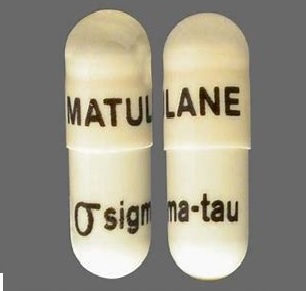Procarbazine Disease Interactions
There are 5 disease interactions with procarbazine.
Antineoplastics (applies to procarbazine) infections
Major Potential Hazard, High plausibility. Applicable conditions: Infection - Bacterial/Fungal/Protozoal/Viral
Because of their cytotoxic effects on rapidly proliferating tissues, antineoplastic agents frequently can, to varying extent, induce myelosuppression. The use of these drugs may be contraindicated in patients with known infectious diseases. All patients should be instructed to immediately report any signs or symptoms suggesting infection such as fever, sore throat, or local infection during antineoplastic therapy. Close clinical monitoring of hematopoietic function is recommended.
Procarbazine (applies to procarbazine) bleeding disorders
Major Potential Hazard, Moderate plausibility.
Procarbazine induces myelosuppression, including thrombocytopenia. Bleeding tendencies have included petechiae, purpura, epistaxis, hemoptysis, hematuria, and melena. Therapy with procarbazine should be administered cautiously in patients with bleeding tendencies. Patients should be instructed to immediately report any signs or symptoms of bleeding. Procarbazine should be withheld and/or discontinued if bleeding occurs. Therapy should be withheld if white blood cell counts fall below 4000/mm3 and/or platelet counts fall below 100,000/mm3. Clinical monitoring of hematopoietic function is recommended.
Procarbazine (applies to procarbazine) myelosuppression
Major Potential Hazard, High plausibility. Applicable conditions: Bone Marrow Depression/Low Blood Counts, Fever
Procarbazine induces myelosuppression. Leukopenia, thrombocytopenia, and anemia have been reported during procarbazine therapy. Therapy with procarbazine is contraindicated in patients with inadequate bone marrow reserve as demonstrated by bone marrow aspiration, and should be administered after cautious consideration in patients whose bone marrow reserve may be severely depressed by prior irradiation or chemotherapy or whose marrow function is recovering from previous cytotoxic therapy. Patients should be instructed to immediately report any signs or symptoms suggesting bone marrow suppression such as fever, sore throat, local infection, or bleeding. Therapy should be withheld if leukocyte counts fall below 4000/mm3 and/or platelet counts fall below 100,000/mm3. Close monitoring of hematopoietic function is recommended.
Procarbazine (applies to procarbazine) hepatic dysfunction
Moderate Potential Hazard, Moderate plausibility. Applicable conditions: Liver Disease
Procarbazine is metabolized by liver and kidney. Patients with hepatic impairment may be at increased risk for toxicity from procarbazine therapy at recommended dosages. Therapy with procarbazine should be administered cautiously in patients with compromised hepatic function.
Procarbazine (applies to procarbazine) renal dysfunction
Moderate Potential Hazard, Moderate plausibility.
Procarbazine is metabolized by the liver and kidney. Approximately 70 % of procarbazine is excreted in the urine. Patients with renal impairment may be at increased risk for toxicity from procarbazine therapy at recommended dosages. Therapy with procarbazine should be administered cautiously in patients with compromised renal function.
Switch to professional interaction data
Procarbazine drug interactions
There are 559 drug interactions with procarbazine.
Procarbazine alcohol/food interactions
There is 1 alcohol/food interaction with procarbazine.
More about procarbazine
- procarbazine consumer information
- Check interactions
- Compare alternatives
- Side effects
- Dosage information
- During pregnancy
- Drug class: miscellaneous antineoplastics
- En español
Related treatment guides
Drug Interaction Classification
| Highly clinically significant. Avoid combinations; the risk of the interaction outweighs the benefit. | |
| Moderately clinically significant. Usually avoid combinations; use it only under special circumstances. | |
| Minimally clinically significant. Minimize risk; assess risk and consider an alternative drug, take steps to circumvent the interaction risk and/or institute a monitoring plan. | |
| No interaction information available. |
See also:
Further information
Always consult your healthcare provider to ensure the information displayed on this page applies to your personal circumstances.


